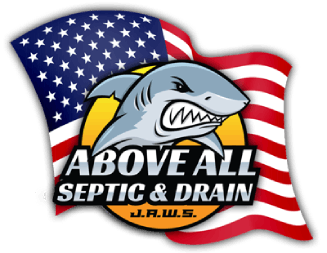The EPA recommends that a septic tank should be inspected every two to three years, with mechanical pumping typically required every three to five years to empty the tank. Septic systems that are undersized or that see very heavy use may require pumping annually. Some systems have electrical float switches, pumps, or mechanical components, and these need to be inspected more often — typically once each year. Pumping is the process of removing sludge from the bottom of the septic tank, and this needs to be done before the sludge builds up to a level where it blocks the outlet pipe through which liquids flow into the drain field.
Signs Your Septic Tank Needs Pumping
- Slow drainage in sinks, tubs, and toilets
- Sewage backups in the home or business
- Foul odors around the septic tank area
- Lush green grass or standing water over the drain field
- Gurgling sounds from drains and plumbing fixtures
- Toilets that won’t flush properly or overflow frequently
- High nitrate levels in nearby wells (for well water users)
- Septic alarms sounding on advanced treatment systems
Factors That Affect Pumping Frequency
- Household size and water usage patterns
- Garbage disposal use and food waste disposal habits
- Laundry frequency and detergent types
- Toilet paper usage and flushable product disposal
- Hosting guests or seasonal occupancy changes
- Age and condition of the septic system
- Soil conditions and drain field performance
- Use of septic additives and their effectiveness
Professional Pump-Out Process
- Pre-service septic tank location and access preparation
- Safety equipment and confined space entry protocols
- Tank inspection for structural damage and component wear
- Systematic pumping of all three layers (scum, liquid, sludge)
- Baffles and inlet/outlet pipe inspection
- Filter cleaning or replacement when applicable
- Detailed documentation and service reporting
- Recommendations for repairs or maintenance needs
Types of Septic Systems and Pumping Requirements
- Conventional septic systems with standard pumping needs
- Advanced treatment units requiring specialized maintenance
- Aerobic treatment systems with additional component service
- Pump-assisted systems with grinder pumps
- Mound systems and their unique pumping considerations
- Commercial septic systems with higher capacity needs
- Seasonal systems requiring different maintenance schedules
Septic Tank Inspection During Pump-Outs
- Structural integrity assessment of tank walls and lid
- Inlet and outlet baffle condition evaluation
- Pipe connections and seal integrity checks
- Septic filter condition and cleaning needs
- Measuring sludge and scum layer depths
- Identifying potential drain field problems
- Electrical component testing for advanced systems
- Documentation for insurance and regulatory compliance
Emergency Septic Pump-Out Services
- 24/7 emergency response for sewage backups
- Holiday and weekend availability for urgent situations
- Rapid response for health hazard conditions
- Temporary waste bypass solutions during repairs
- Emergency contact information prominently displayed
- Same-day service for critical situations
- Coordination with plumbers for backup-related repairs
Proper Septic System Care Between Pump-Outs
- Water conservation tips to extend pumping intervals
- Proper disposal practices for household chemicals
- Toilet paper and flushable product recommendations
- Garbage disposal use guidelines and alternatives
- Laundry detergent selection for septic systems
- Household cleaning product septic-safe alternatives
- Landscaping considerations around septic components
Septic System Troubleshooting
- Diagnosing pump-out frequency needs based on usage
- Identifying drain field problems during tank service
- Recognizing signs of system failure requiring immediate attention
- Understanding when repairs are needed vs. replacement
- Evaluating system capacity for current usage needs
- Assessing the need for system upgrades or modifications
Seasonal Considerations for South Florida
- Hurricane season preparation and post-storm assessment
- Heavy rain season impact on septic system performance
- Dry season maintenance and system monitoring
- Tourist season increased usage management
- Saltwater intrusion effects on coastal septic systems
- Seasonal home maintenance and pump-out scheduling
Commercial Septic Pump-Out Services
- Restaurant and food service facility specialized needs
- Office building and commercial facility regular maintenance
- Multi-unit residential complex coordinated service
- Industrial facility waste management compliance
- Special event and temporary facility pump-out services
- Large capacity system handling and specialized equipment

